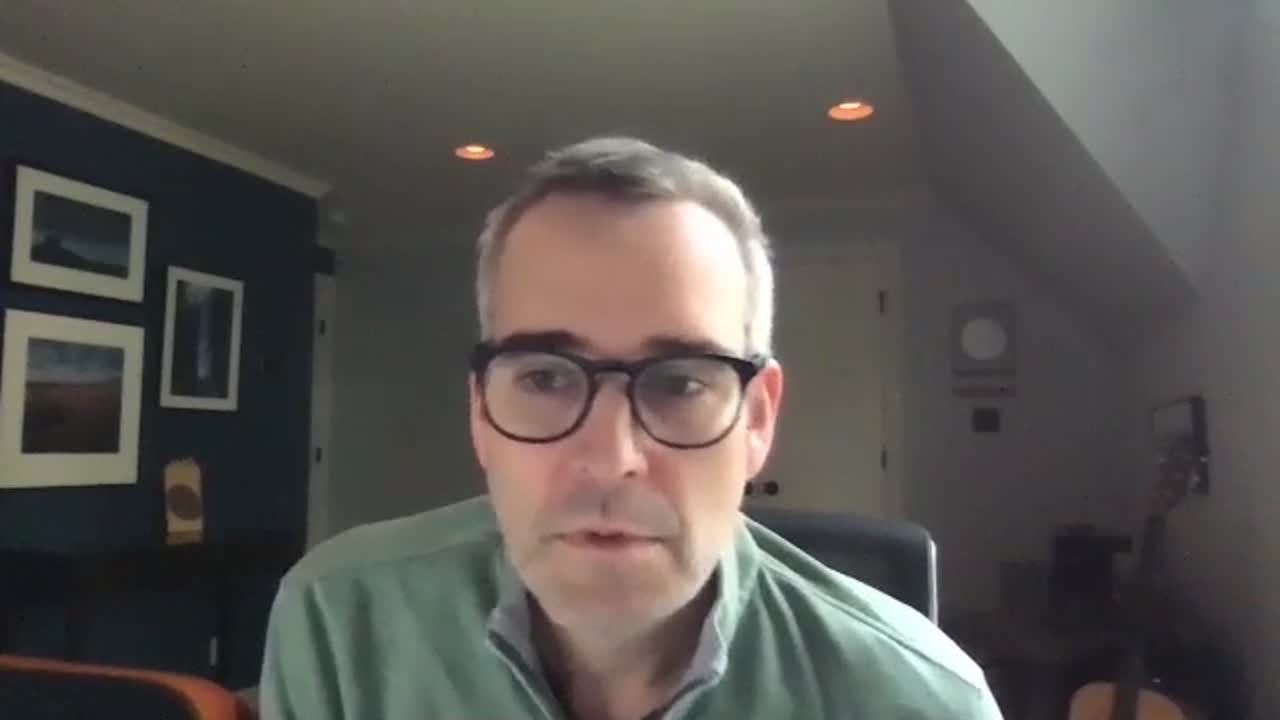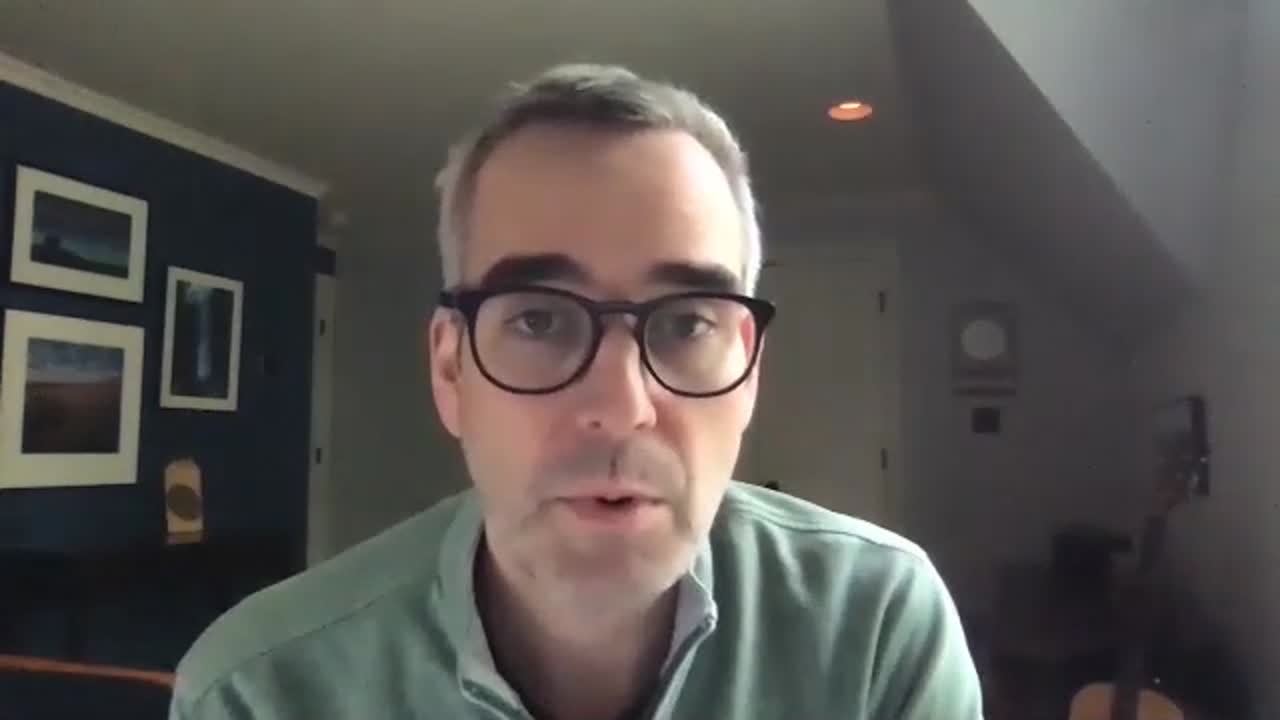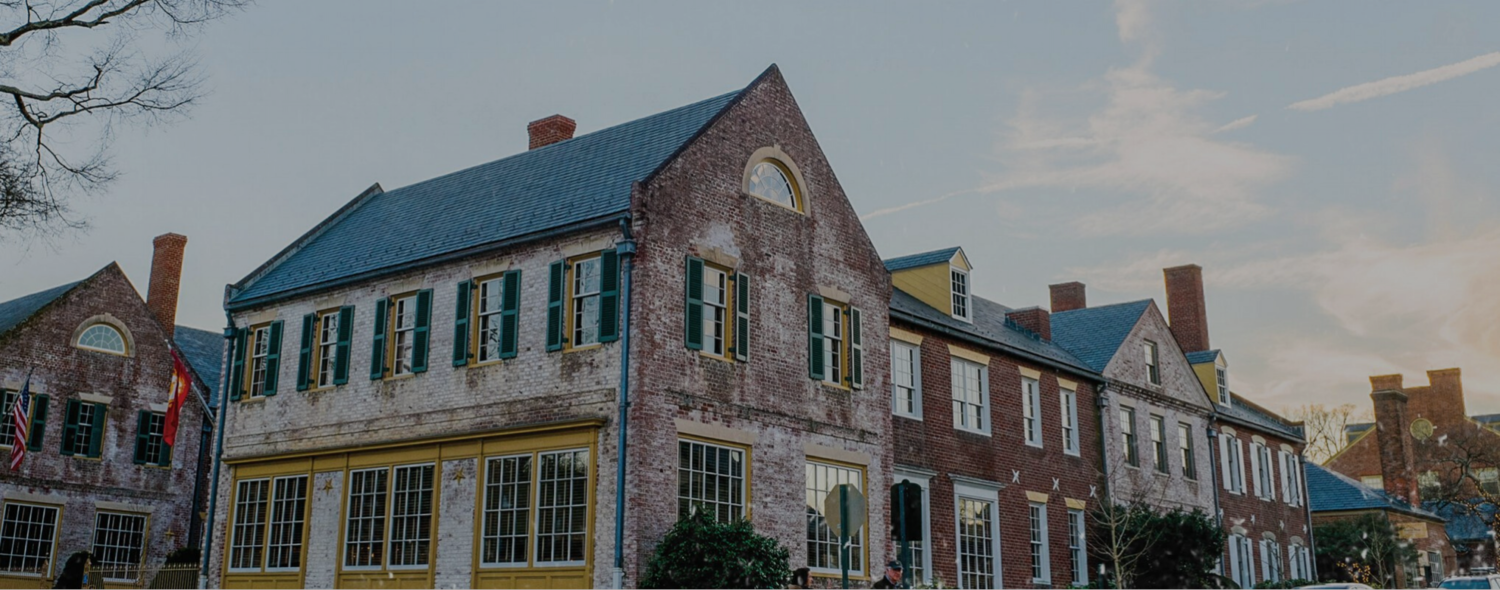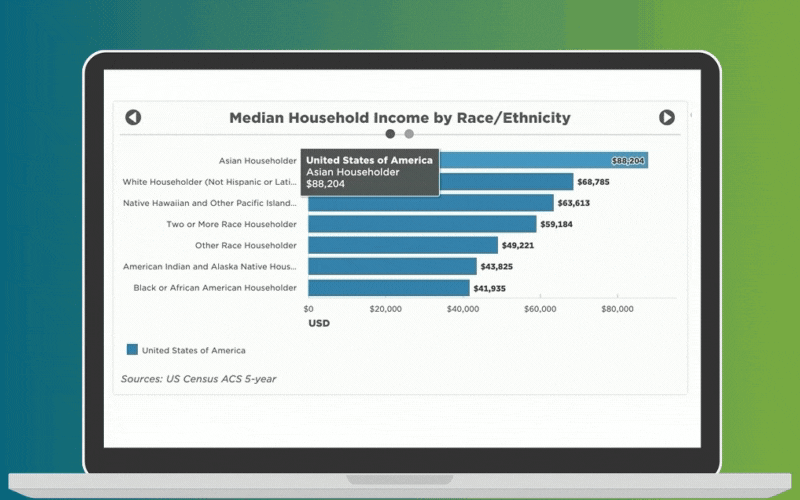Disaster Recovery Means You Never Go Back to Normal
He walks into the office wearing a baseball cap and is laughing within 10 minutes. That’s how I think of Stephen Hardy, mySidewalk’s CEO. When I met him, I remember thinking how much his exuberance was a rare (but welcome) departure from the traditional stiff CEO.
For example, right after the team went remote due to the Coronavirus, we had our weekly 4 p.m. end-of-week meeting. Stephen was supposed to be on vacation in Hawaii that day. So, he joined our Friday Zoom meeting with a fedora on his head, and a beer in his hand, making the best of things.
I asked to interview Stephen for this blog because he is a sought after expert for cities rebuilding after disasters. Below are my key takeaways from our conversation, plus the videos if you want to hear it for yourself.
We discuss what he's learned as a leader about remote work, why we can't ever go back to "normal," and why you should look to your peer cities for solutions.
Divided, But Together
Like many of you, we thought we’d be in COVID-19 quarantine for just a couple of weeks. Then there was the shock of realizing all this was going to be at least semi-permanent. I asked Stephen what it had been like for him as a leader. What was it like to have your livewire team go from working in the office, to suddenly 100% remote overnight?
He told me it’s made him rethink how we hire.

In the two-plus months that we’ve been working remotely, we’ve onboarded two new employees. These women have literally never seen their desks in our office. They’ve spent weeks working hard and getting to know all of us, without even having coffee in our kitchen. And they’re doing great.
It’s been inspiring to see how our people rise to the challenge and how much resilience they have.
Remote work lessons learned: key takeaways
- Intentionality – we can’t rely on intuitive communication or learning through osmosis anymore. We have to set very intentional meetings. We have to proactively check-in with one another because now, you can’t immediately see when someone’s having a bad day.
- Rethinking remote – if nothing else, this has proven just how much of our jobs can be done remotely. Knowing this will make us more open-minded to hiring folks outside of our city or state in the future.
Why Things Won’t Go Back to Normal
Coronavirus is a disaster. But it’s not like most calamities.
Most natural disasters are event-driven, Stephen explained. Like the flooding in Nebraska last year, Hurricane Katrina, or a tornado. They're devastating, but it's over relatively quickly, and you can start to assess the damage and plan your response.
There's also a well-established federal process for supporting a region that is suffering from a natural disaster.

What makes the Coronavirus so different is it's unprecedented. Not only is it deadly, but we don’t have a clear federal process in place for supporting a global pandemic. Not to mention, we don’t know when it will end.
The director of the Centers for Disease Control and Prevention recently warned that COVID-19 will likely grow worse, with the onset of the fall and winter flu season. Experts estimate that the vaccination is anywhere from 1-2 years away, maybe even three.
So we have to respond to this disaster while it’s still happening.
So what can we learn from disaster recovery best practices? First, you need to be able to effectively assess the damage, both structural and surface, and find out who is most vulnerable.
While analysis is critical, it’s especially challenging with COVID-19 because the conditions keep evolving quickly. The immediate concerns have obviously been around managing the health emergency. But putting that aside for a moment, how do we continue to build cities that thrive?
Disaster recovery 101 can help: accept that you can’t put things back exactly like they were before.
Because the hard truth is, restoration requires significant investments, new programs, new dollars, new efforts. You don’t want to pour all of that into “how it used to be.” Instead, ask yourself, how should it be?
As Stephen and Wayne Gretzky said, “‘Your goal is to ‘skate to where the puck is going to be, not where it is.’”
Disaster recovery lessons for COVID-19: key takeaways
Accurate assessments are everything. For you to effectively respond, repair, and help those who need it most, you need the best data.
Getting back to the normal status quo shouldn’t be the goal. Don’t think about where your community was before. Think about where you wanted to be before the disaster.
Disaster Recovery Inspiration
When it comes to finding COVID-19 recovery inspiration, here’s what to look for: peers who have already overcome natural disasters, and those with data-driven city performance analysis. Stephen recommends finding leadership teams who are great at communicating and talking to your peer cities.

For example, we recently had a webinar where we interviewed some of our customers. We asked them about how they’ve been engaging their communities amid COVID-19.
A Health Officer for Navajo County, Jeff Lee said he’s spending 95% of his time on communication. He said using an online tool like a dashboard for their COVID-19 updates had been a lifesaver." (See their dashboard here.)
Another customer, the City of Williamsburg, said they were able to transition to quarantine more quickly because they already had a robust communication infrastructure. They were the first in the state to live-stream city hall meetings.
These cities have been tech and data leaders for a while, giving them a COVID-19 response advantage.
We're also inspired by those who go out of their way to communicate in a way that engages. Our customer Gainsville Florida is a great example. They’re using multiple formats and platforms to meet their people where they’re at, absolutely killing it on Instagram in fun and serious ways.
No one is going to read a 50-page PDF. Instead, ask yourself what would really be worth someone’s time? Start by sharing that on every channel.
Lastly, look to your peer cities for solutions, not aspirational peer cities, but your actual peers. For example, our hometown of Kansas City is not a peer of New York, as much as we wish we were. Omaha is a much closer comparison.
Stephen recommends going to the data and seeing what is working for cities like yours. Then use that intel to drive your policies. Find communities with similar growth rates, demographics, industries, and educational profiles, etc.Here’s a great example of how you can benchmark against a peer city to build a strategic plan.
If you don’t know where to start, we can help.
Disaster recovery inspiration: key takeaways
Excellent communication is always vital, but especially in a crisis. Because you can be doing a lot of great work, but if no one knows about it, what’s the point? Look for examples of leaders who analyze and share their efforts in an engaging way.
A pandemic means that data awareness and data literacy have increased. People are hungrier than ever for information. So be prepared to answer questions like “what’s the data driving this decision?”
Learn from your peer cities. What is working for them that might work for your city as well? Network with these leaders, and find out how they’re managing your key challenges.
Subscribe and stay tuned. We’ll be doing a webinar in June, talking with some of our partners about how they’re managing their COVID-19 disaster recovery.
Meanwhile, find out how mySidewalk is helping communities get the data they need to recover forward and rebuild stronger than before. Or contact us here.
Share this
You May Also Like
These Related Stories
![Customer Spotlight: Next Level City KPI Transparency [Video]](https://www.mysidewalk.com/hubfs/mySidewalk%20Customer%20Spotlight_City%20Performance%20Dashboard%20%5BVideo%5D.png)
Customer Spotlight: Next Level City KPI Transparency [Video]

mySidewalk Empowers Williamsburg to Map City Performance KPIs


No Comments Yet
Let us know what you think